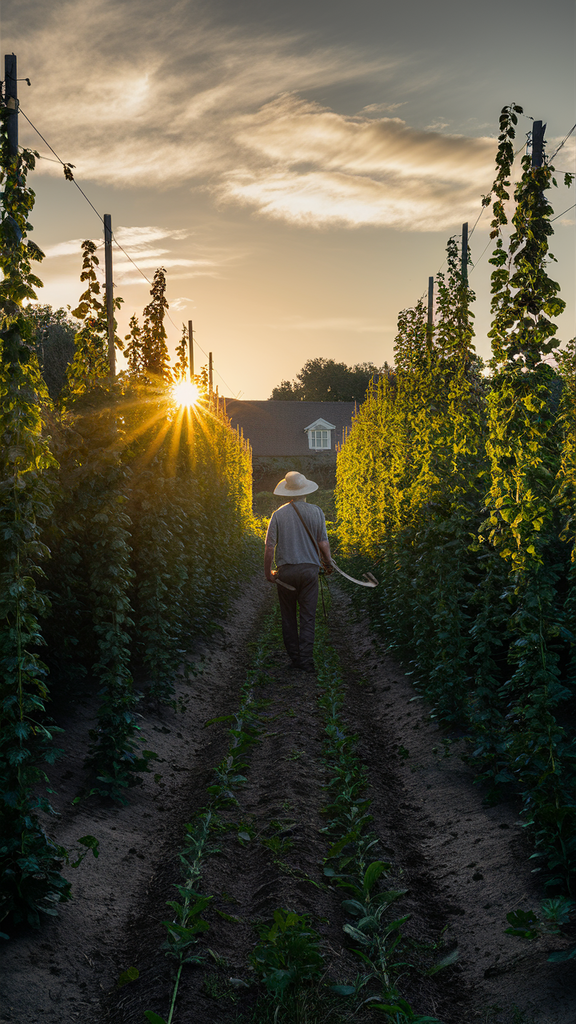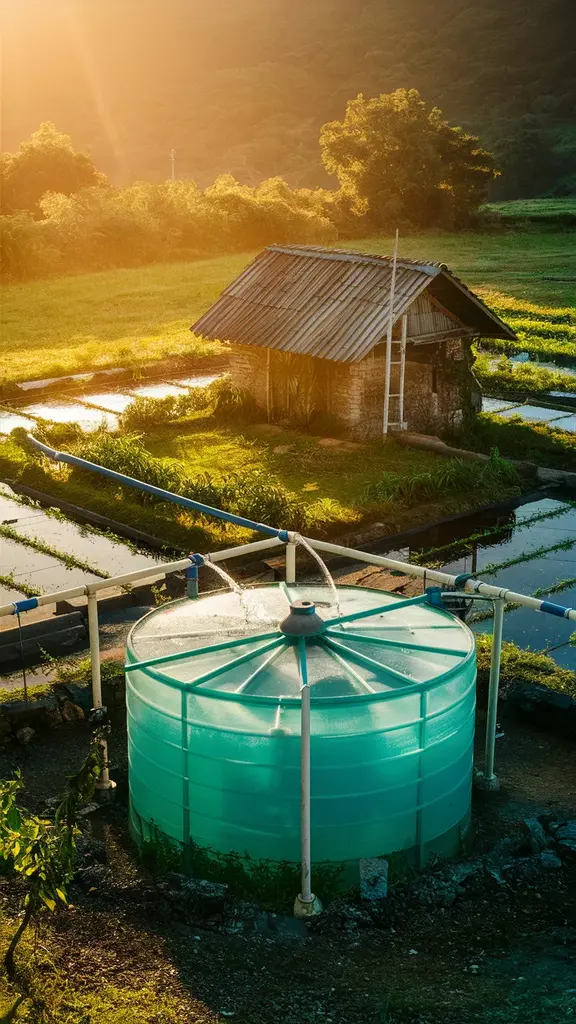Uncertain times call for self-sufficiency, and a small survival farm could be your ultimate lifeline. In this comprehensive guide, you’ll discover 25 innovative ideas to transform your backyard into a thriving survival haven.
From cultivating nutrient-dense foods to raising livestock and harnessing renewable energy, this article empowers you to take control of your family’s well-being in any crisis.
Key Takeaways
- Diverse strategies for growing fruits, vegetables, and specialty crops
- Raising livestock for protein, eggs, and other essential resources
- Implementing sustainable farming practices like composting and rainwater harvesting
- Creating value-added products and generating additional income streams
- Offering educational experiences and agritourism opportunities
Learn how to establish a self-sufficient small survival farm that provides sustenance, income, and peace of mind, no matter what the future holds.
Table of Contents
Growing Fruits and Vegetables
Cultivating your own fruits and vegetables is the foundation of a successful survival farm. Consider these methods:
1. Vegetable Gardening: Establish raised beds (benefits of raised bed gardening) or in-ground plots for a bountiful harvest of nutritious produce. Focus on hardy, prolific varieties suitable for your climate.

2. Fruit Trees and Berry Bushes: Plant low-maintenance fruit trees (fast-growing fruit trees) and berry bushes that provide fresh, vitamin-rich yields for years to come.

3. Hydroponic or Aquaponic Gardening: Explore soilless growing techniques like hydroponics or aquaponics to maximize space and water efficiency.

4. Mushroom Cultivation: Grow protein-rich mushrooms using logs, straw bales, or specialized kits for a year-round supply.

| Crop | Yield (per sq ft) | Growing Season |
|---|---|---|
| Tomatoes | 5-10 lbs | Summer |
| Potatoes | 3-5 lbs | Spring/Fall |
| Strawberries | 1-2 lbs | Spring/Fall |
| Apples | 20-40 lbs (per tree) | Summer/Fall |
Diversifying your crops ensures a steady supply of fresh produce, even in challenging conditions. Consider fast-growing vegetables for a quick harvest.
Raising Livestock
Incorporating livestock into your survival farm provides valuable sources of protein, eggs, and other essential resources. Consider these options:
5. Backyard Chickens: Raise dual-purpose breeds for a steady supply of eggs and meat. Chickens also provide natural pest control and fertilizer.

6. Beekeeping: Establish bee colonies for honey production and pollination of your crops. Beeswax and propolis offer additional benefits.

7. Quail or Duck Farming: These hardy birds require minimal space and offer a sustainable source of eggs and meat.

8. Rabbit Husbandry: Rabbits are efficient converters of forage into lean protein, reproducing rapidly for a consistent meat supply.

9. Goat or Sheep Farming: Milk, cheese, wool, and meat make these ruminants valuable additions to any survival farm.

| Livestock | Space Requirements | Annual Yield |
|---|---|---|
| Chickens | 4 sq ft per bird | 200-300 eggs |
| Rabbits | 8 sq ft per rabbit | 50-100 lbs meat |
| Goats | 200 sq ft per goat | 1.5-2 gallons milk daily |
Proper housing, feed, and care are essential for the well-being of your livestock and optimal productivity. Attract beneficial insects to help with pest control.
Specialty Crops and Products
Diversifying your survival farm with specialty crops and products adds value and versatility. Consider these options:
10. Herb Garden: Cultivate a variety of culinary and medicinal herbs for flavoring, preserving, and natural remedies.

11. Flower Farming: Grow cut flowers for personal enjoyment or to sell at local markets, providing an additional income stream.

12. Maple Syrup Production: With the right climate and sugar maple trees, tap into a delicious and valuable natural sweetener.

13. Lavender or Essential Oil Distillation: Grow aromatic plants like lavender and extract essential oils for personal use or sale.

14. Hops or Brewing Ingredients: Supply the growing craft beer industry with locally grown hops or other brewing ingredients.

- Profitable Herbs: Basil, oregano, rosemary, thyme, mint
- High-Value Essential Oils: Lavender, peppermint, lemon balm, chamomile
- Brewing Ingredients: Hops, barley, wheat, rye
Specialty crops offer unique opportunities for income generation and self-sufficiency while diversifying your farm’s offerings.
Sustainable Farming Practices
Embracing sustainable practices is crucial for the long-term viability of your survival farm. Implement these eco-friendly methods:
15. Composting: Transform organic waste into nutrient-rich soil amendments (perfect compost pile), reducing reliance on synthetic fertilizers.

16. Vermicomposting (Worm Farming): Harness the power of worms to break down organic matter and create a highly effective soil conditioner.

17. Rainwater Harvesting: Collect and store rainwater for irrigation, reducing water consumption and costs.

18. Solar or Wind Power: Invest in renewable energy sources like solar panels or wind turbines to power your farm operations and reduce your carbon footprint.

- Composting Benefits: Improves soil structure, retains moisture, promotes beneficial microorganisms
- Vermicomposting Benefits: Nutrient-rich castings, aerates soil, minimizes waste
- Rainwater Harvesting Benefits: Conserves water, reduces utility costs, environmentally friendly
Sustainable farming practices not only benefit the environment but also contribute to a more resilient and self-sufficient system.
Value-Added Products
Maximize the potential of your farm’s bounty by creating value-added products. These options offer additional income streams and preserve surplus yields:
19. Jams, Jellies, and Preserves: Transform fresh fruits into delectable spreads and canned goods for year-round enjoyment or sale.

20. Baked Goods or Homemade Pasta: Utilize your farm’s grains and produce to create artisanal baked goods or fresh pasta for local markets or personal consumption.

21. Cheese or Dairy Products: If raising dairy animals, explore the art of cheesemaking or bottling milk for added value.

22. Handcrafted Items: Leverage your farm’s resources to create unique artisanal products like soaps, candles, or textiles.

- Jam and Jelly Varieties: Strawberry, blueberry, raspberry, peach, apple
- Baked Goods: Breads, pies, cookies, muffins, granola
- Dairy Products: Cheese (cheddar, feta, gouda), yogurt, butter, ice cream
Value-added products not only generate additional income but also preserve the freshness and extend the shelf life of your farm’s yields.
Educational and Experiential Offerings
In addition to producing goods, your survival farm can serve as an educational and experiential hub. Consider these offerings:
23. Farm Tours or Educational Workshops: Share your knowledge and expertise by offering guided tours or hands-on workshops on topics like gardening, animal husbandry, or homesteading skills.

24. Farm Stay or Agritourism Experiences: Provide immersive experiences for visitors seeking a taste of farm life, offering accommodation, farm-to-table meals, and participatory activities.
25. Petting Zoo or Animal Interactions: If raising livestock, create a petting zoo or animal interaction area to engage visitors, especially families with children.

- Workshop Topics: Seed saving, canning techniques, beekeeping, soap making
- Farm Stay Activities: Harvesting crops, milking animals, cheese making, nature walks
- Petting Zoo Animals: Goats, sheep, chickens, rabbits, ducks
Educational and experiential offerings allow you to share your passion for sustainable living while generating additional revenue streams.
Conclusion
Establishing a small survival farm is a rewarding journey that requires careful planning and a diverse approach. By implementing these 25 ideas, you can create a self-sufficient and resilient system that provides sustenance, income, and peace of mind in uncertain times.
Start small and focus on mastering a few key areas before expanding. Diversify your crops, livestock, and income streams to minimize risks and maximize opportunities. Embrace sustainable practices like vermicomposting to ensure the long-term viability of your farm and minimize your environmental impact.
Remember, a successful survival farm is not just about preparedness; it’s about fostering a deeper connection with nature, promoting self-reliance, and leaving a legacy for future generations. Approach this endeavor with passion, determination, and a willingness to learn from resources like container gardening guides and food calorie charts, and you’ll be well on your way to creating a thriving survival haven.


